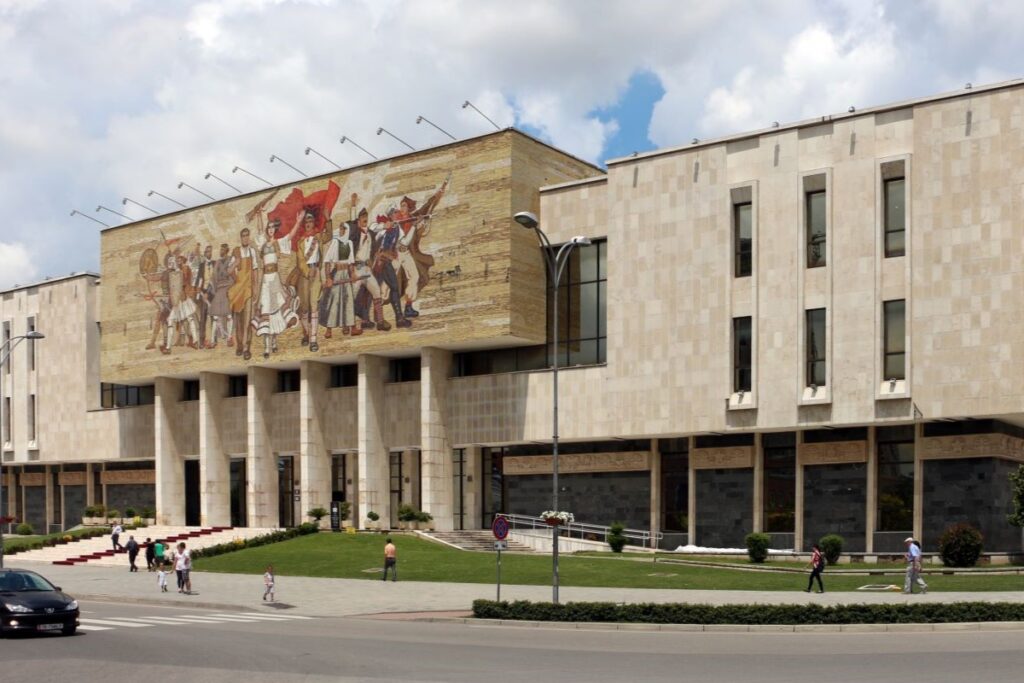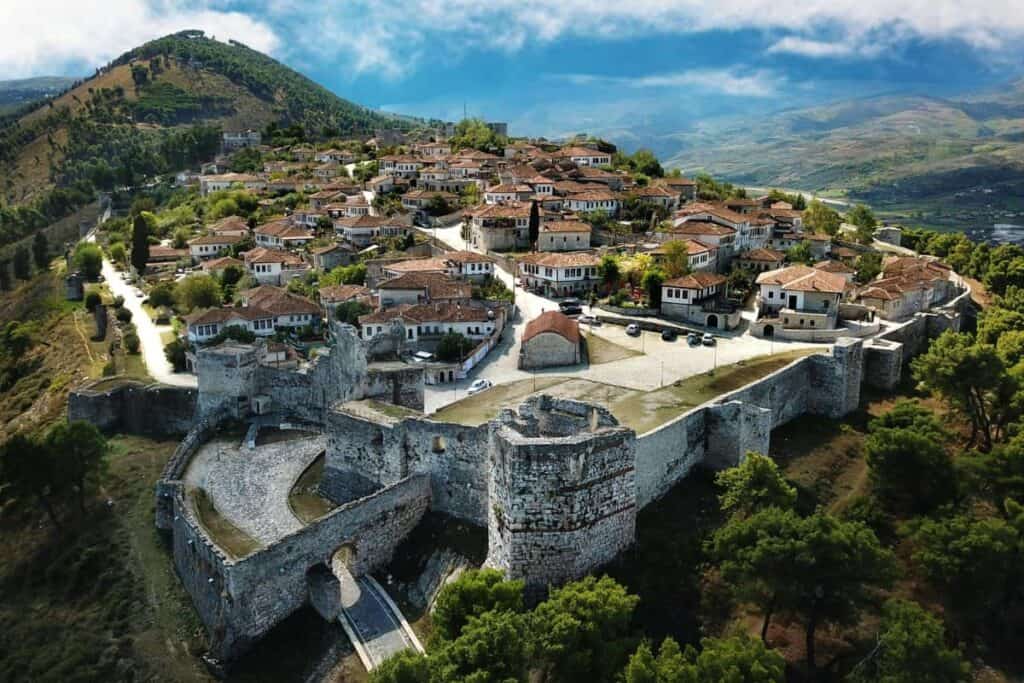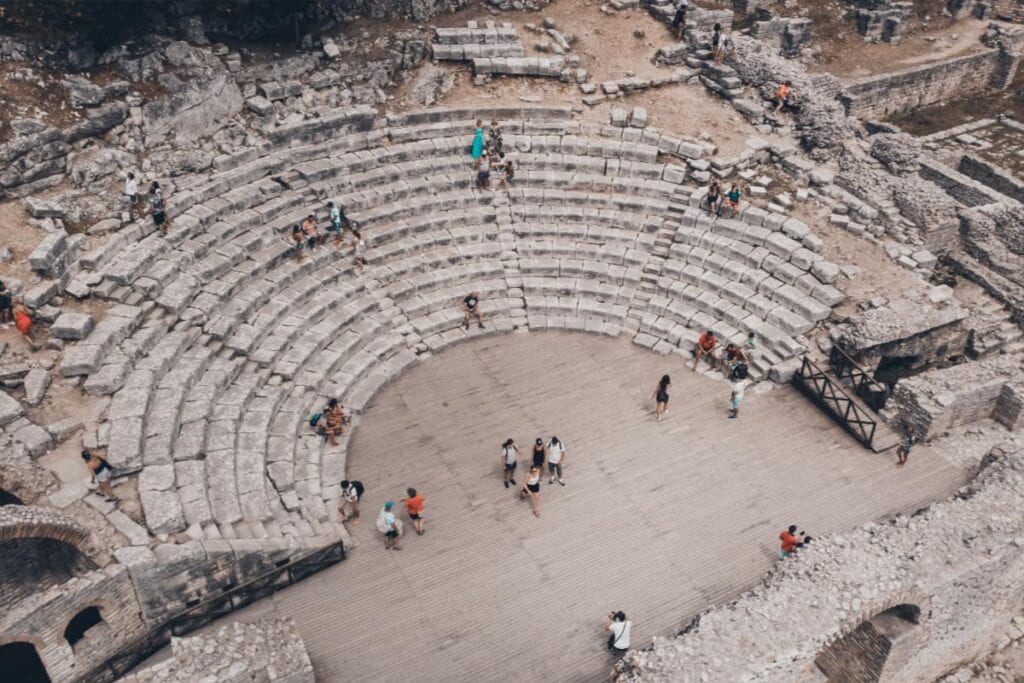Located at the heart of Tirana in the vibrant Skanderbeg Square, the National Historical Museum of Albania (Muzeu Historik Kombëtar) is a treasure trove of the country’s rich and diverse history. As Albania’s largest museum and one of its most iconic cultural landmarks, it offers visitors a fascinating journey through the centuries, showcasing the triumphs, struggles, and stories that have shaped the Albanian identity.

Whether you’re a history enthusiast or simply a curious traveler, the museum is a must-visit destination that will leave you with a deeper appreciation for Albania’s cultural heritage.
Why Is the National Historical Museum Important?
The National Historical Museum is more than just a collection of artifacts; it is a living archive of Albania’s past. Here’s why it holds immense significance:
- Preservation of Heritage: The museum houses over 4,000 artifacts, documents, and exhibits that span thousands of years, from prehistoric times to the modern era. These carefully preserved treasures provide invaluable insight into Albania’s unique cultural, political, and social evolution.
- Symbol of Identity: For Albanians, the museum serves as a powerful reminder of their nation’s resilience and perseverance. It showcases the struggles for independence, the rise of the Albanian Renaissance, and the proud cultural achievements that define the country’s identity.
- Educational Importance: The museum is not only a cultural attraction but also a vital educational resource. It helps visitors understand Albania’s role in European and Balkan history, making it a key site for both locals and tourists seeking to learn more about the region.
What Can You See Inside?
The museum is divided into several carefully curated pavilions, each focusing on a different period of Albania’s history. Some highlights include:
- Pavilion of Antiquity: Discover the roots of Albanian civilization through ancient artifacts, including tools, pottery, jewelry, and statues from the Illyrian era, which date back to over 4,000 years. This pavilion provides a glimpse into the advanced societies that thrived in the region long before modern Albania.
- Pavilion of the Middle Ages: Learn about Albania’s medieval history, including the rise of feudal states and the pivotal role of Gjergj Kastrioti Skanderbeg, the national hero who led the resistance against the Ottoman Empire.
- Pavilion of the Albanian Renaissance: This section highlights Albania’s cultural awakening during the 19th century, focusing on the national movement for independence and the efforts to preserve the Albanian language, identity, and culture.
- Pavilion of Independence: Explore the pivotal moments that led to Albania’s declaration of independence in 1912, showcasing original documents, photographs, and personal items belonging to the key figures of the time.
- Pavilion of the Anti-Fascist War: Dive into Albania’s struggles during World War II, with exhibits that commemorate the country’s resistance against Italian and German occupation, as well as its role in shaping post-war Europe.
- Pavilion of Communist Terror: One of the most emotionally powerful sections, this pavilion sheds light on the decades of communist dictatorship in Albania. It includes haunting artifacts, letters, and photographs that reflect the hardships faced by Albanians during this period of repression.
Why Tourists Must Visit the National Historical Museum
For travelers visiting Tirana, the National Historical Museum is an essential stop. Here’s why it should be at the top of your itinerary:
- Understand Albania’s Unique Story: Albania has a fascinating history that is distinct from its Balkan neighbors. By visiting the museum, you’ll gain a better understanding of the country’s journey from ancient Illyria to its modern transformation.
- See Iconic Artifacts: From prehistoric relics to the belongings of national heroes, the museum houses some of the most significant artifacts in Albanian history. These items bring history to life and offer a tangible connection to the past.
- Cultural Immersion: The museum provides a deep dive into Albania’s traditions, struggles, and achievements, allowing you to connect with the people and culture on a more meaningful level.
- Architectural Marvel: The museum itself is an architectural landmark, with its mosaic façade, titled The Albanians, depicting the nation’s journey through history. It is one of the most photographed landmarks in Tirana and a symbol of Albanian pride.
- Central Location: Situated in Skanderbeg Square, the museum is within walking distance of other attractions such as the Et’hem Bey Mosque, the Clock Tower, and various cafés and restaurants. It’s the perfect starting point for exploring Tirana.
Practical Information
- Location: Skanderbeg Square, Tirana, Albania
- Opening Hours: The museum is open from Tuesday to Sunday, typically from 9:00 AM to 4:00 PM. It is closed on Mondays and public holidays.
- Admission Fee: Entry is affordable, with discounts available for students, seniors, and groups. Guided tours can also be arranged for a deeper experience.
- Best Time to Visit: Mornings are ideal to avoid crowds and enjoy the exhibits at a leisurely pace.
Final Thoughts
The National Historical Museum of Albania is more than just a cultural institution; it’s a gateway to understanding the soul of the Albanian people. Through its exhibits, visitors are transported through millennia of history, gaining insight into the resilience, creativity, and passion that define this nation.
For tourists, the museum offers a profound and enriching experience that complements Albania’s stunning landscapes and vibrant cities. Whether you’re a history buff, a casual traveler, or someone eager to learn about Albania’s hidden gems, the National Historical Museum is a place you cannot miss.
Take the time to explore its halls, admire its artifacts, and let Albania’s incredible story unfold before your eyes. Your visit will leave you with a deeper appreciation for this remarkable country and its enduring legacy.


